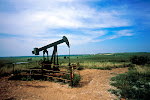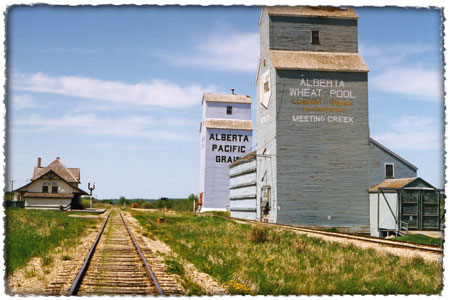What comes to mind when I think of the Canadian prairies is food. I live in Ontario and what I associate with being a Canadian, in the west, is cowboys, their ranches and beef. You might ask why I make this connection. I have been to Calgary once and I saw no authentic cowboys, no cattle ranch, and certainly no cows. So how did this come to be a symbol of Canadian identity?
One student, Jaelyn Molyneux, at the University of Calgary suggests that we Canadians ‘have been led to believe’ that “Biting into a big, juicy steak is an authentic part of the Alberta experience” (Molyneux, SW10). This is believable because Canadian beef is an important part of the National economy, and an essential part of the Alberta Provincial economy.
‘In Alberta alone there were roughly 32 000 cattle producers in 2002 and 5.3 million cattle livestock. This accounts for about forty percent of Canada’s total cattle livestock for beef! Alberta beef makes about $4 billion in transactions a year or “Fifty-one percent of farm production income”. It has been estimated that all in all, Alberta beef makes a total contribution to the National economy of around $15 billion per year’ (Cope).
So, playing a huge role in the economy and in the lives of some 32 000 cattle producers in Alberta alone is one reason why the rest of Canada associates beef with Alberta.
Another reason, we might associate being Canadian, in the west, with beef is because it has been so keenly promoted by the Alberta Beef Producers, our government, and private sponsors. ‘In 2003, the Canadian beef industry suffered greatly when a case of bovine spongiform disease (BSE) or mad-cow disease was found in an Albertan cow’ (Forge & Frechette). ‘Canada produces about one third more beef than Canadians consume and it is therefore an important export’ (Cope). The case frightened the Canadian and American public and had dire economic consequences as the US closed their border to live cattle imports from Canada.
‘Alberta beef exports, worth around $4 billion in 2002, dropped in $2.1 billion in 2003’. Beef’s total contribution to the Canadian economy fell from $30 billion in 2002, to $21 billion”. The impact was substantial, and Alberta needed help. The government provided tens of millions in aid and others did what they could to increase consumption of Alberta beef (Cope).
In Toronto, a Molson Canadian Rocks concert for SARS supported a campaign called “Canadian Beef Rocks”. “"A delegation went to the concert and participated in the mile-long BBQ," says Cockwill. "We wore cowboy hats, and Premier Klein was there flipping burgers. We had Beef Without Borders." And Canadians responded. Immediately after the crisis broke, consumption rose 60%. "It was the first country in the world that increased consumption in a BSE crisis," says Glaser” (Cope).
“Alberta Beef Producers were a success. They also continued to commit $8.5 million annually (since the BSE incident in the United Kingdom, 1993) to promote Alberta beef’ (Cope). Their slogan being “If it ain’t Alberta, it ain’t beef!” (Cope). This slogan was heard across Canada and helped regain public faith in Alberta beef. It gave Canadians a sense of identity, a way of identifying with the prairies.
million annually (since the BSE incident in the United Kingdom, 1993) to promote Alberta beef’ (Cope). Their slogan being “If it ain’t Alberta, it ain’t beef!” (Cope). This slogan was heard across Canada and helped regain public faith in Alberta beef. It gave Canadians a sense of identity, a way of identifying with the prairies.
"The Stampede markets the cowboy and the cowboy is the producer of beef," says assistant professor and food-culture researcher Gwendolyn Blue. Each year, the Calgary stampede is culmination of what it means to be from the prairies and feeds the symbolic stereotypes of Canadian identity in the west. ‘The whole city dresses up in cowboy hats and boots with spurs’, goes to the stampede and eats Alberta beef (White, L1). Along with the ABP private sponsors contribute because they know it gives a boost to the economy, and ultimately promotes Alberta beef. ‘Infact, the stampede holds a dinner, called The Presidents Rodeo for all of the sponsors and serves them up with Alberta’s finest beef’ (Zelinsky, C5).
Alberta beef is an integral part of prairie cuisine and culture. ‘In one article called Redefining Calgary's Seven Wonders the author suggests based on nominations that one of Alberta’s seven wonders might be beef’ (White, L1). White writes “To me, the most quirky new nomination was ginger beef, which received several votes. For those of you who don't know, this is a Chinese-Canadian dish that was refined and popularized in Calgary and has since spread to many parts of the world. John Gilchrist, a fellow Calgary Herald columnist, informed me that in some places, it is known as "Calgary-style Chinese food."
Alberta beef is synonymous with being Albertan, from the prairies, and Canadian. It is a symbol that represents a large part of Canadian agriculture, the economy, and Canadian diet. Although we are not all cowboys, ranchers, or living in the prairies we all have one thing in common; All over Canada we eat Alberta beef and we reap the economical benefits that are generated by this form of industry.





















No comments:
Post a Comment